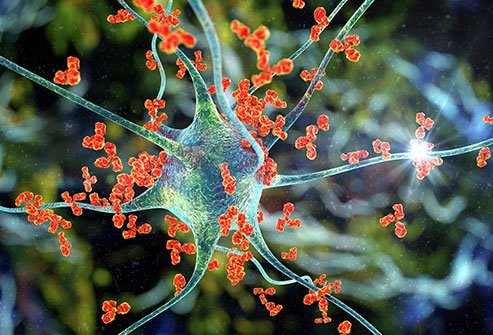How Do You Get Guillain-Barre Syndrome?

Guillain-Barre syndrome (GBS) is a rare autoimmune neurological disorder, in which the immune system attacks the nerves of the body. Anyone can get GBS, but it is more common in older people. Additionally, men have a higher likelihood of getting GBS than women.
How people get GBS is not clearly known. However, the disorder is often seen to occur within days to weeks after an infection, such as:
- Respiratory infection
- Digestive tract infection
- Zika virus infection
- COVID-19
Nearly 66 percent of patients report symptoms of an infection in the six weeks preceding GBS.
Some factors may put people at a greater risk of developing GBS, including:
- Campylobacter infection (bacteria found in uncooked poultry)
- Influenza virus
- Hepatitis A, B, C, or E
- Mycoplasma pneumonia
- Human immunodeficiency virus
- Hodgkin's lymphoma
What are the symptoms of Guillain-Barre syndrome?
Symptoms of Guillain-Barre syndrome (GBS) often start with weakness and tingling sensation in the legs and feet and spread to the arms and upper body. Rarely, symptoms begin from the arm and face. This muscle weakness may progress into paralysis, which is usually temporary.
Furthermore, symptoms of GBS vary for every person, but may include:
- Pricking sensation in the fingers, foot, ankle, or wrist
- Unsteady walking or inability to walk
- Difficulty in speaking, chewing, or swallowing
- Severe cramp-like pain that is worse at night
- Difficulty with movements of eye muscles
- Problems with vision (double vision)
- Digestive problems
- Difficulty with bladder control or bowel function
- A low or a high blood pressure
- Rapid heart rate
- Difficulty in breathing
The symptoms progress to their worst peak within two to three weeks, which is when the person may experience almost complete paralysis. The disorder may become life-threatening and affect breathing, blood pressure, and heart rate.
How is Guillain-Barre syndrome diagnosed?
The signs and symptoms of Guillain-Barre syndrome (GBS) are similar to many other diseases, making it difficult to diagnose the disorder in the initial stages. The doctor may diagnose GBS through its distinguishing features, including:
- The appearance of symptoms. Symptoms appear on both sides of the body.
- Speed of disease progression. Weakness progresses in days or weeks in GBS while it takes months in other disorders (such as multiple sclerosis).
- Changes in the cerebrospinal fluid (CSF). CSF is present around the brain and spinal cord in GBS. This fluid is collected by spinal tap or lumbar puncture and sent to the lab for analysis. Changes typical of GBS may be noticed in the CSF of a patient with GBS.
- Nerve conduction velocity (NCV) test. Slow signal conduction is recorded in the NCV test in GBS.
How is Guillain-Barre syndrome treated?
About 85 percent of patients with Guillain-Barre syndrome (GBS) make full recovery within 6 to 12 months. Chances of recurrence after full recovery are very low.
There is no proper treatment for GBS. However, the main purpose is to avoid breathing problems and reduce symptoms. The treatment includes:
- Plasma exchange (plasmapheresis). The liquid part of the blood called plasma is removed, thereby eliminating the disease-causing antibodies. This lost plasma is replaced by transfusing new plasma.
- Immunoglobulin therapy. Transfusing immunoglobulin-containing healthy antibodies from a donor. High doses of immunoglobulin block GBS-causing antibodies.
- Medications. Medicines are given to reduce pain and prevent blood clots that may develop due to less ambulation.
- Physical therapy. Before and during recovery, physical therapy is needed to keep muscles flexible and to regain strength for proper movement.
